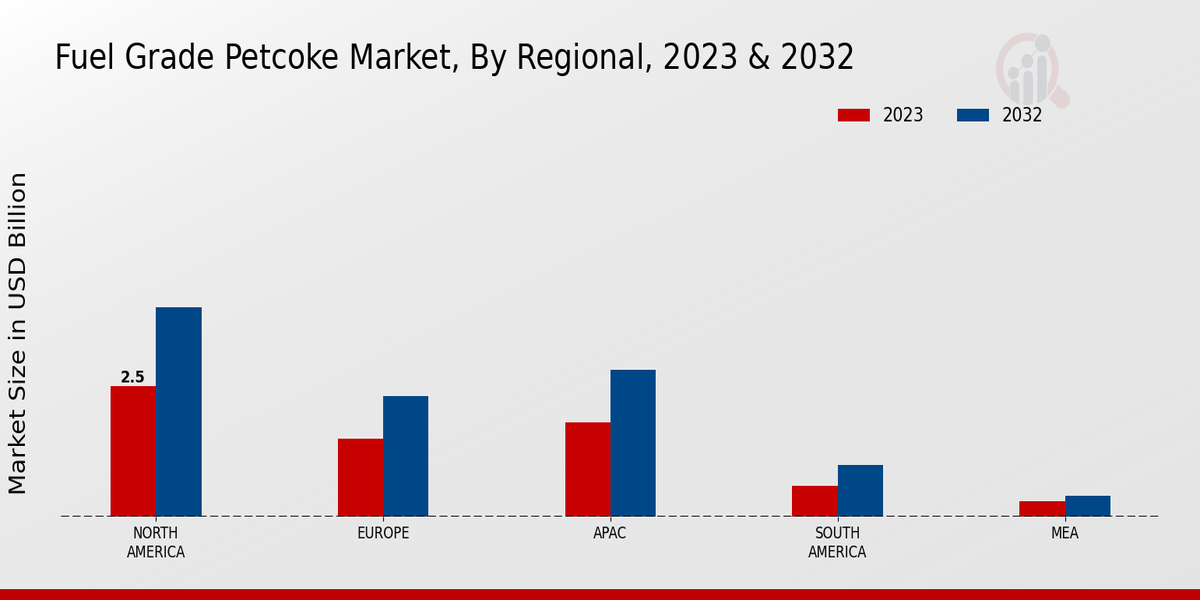Market Trends and Projections
The Global Fuel Grade Petcoke Market Industry is characterized by various trends and projections that highlight its growth trajectory. The market is anticipated to reach 7.41 USD Billion in 2024 and is expected to grow to 12.8 USD Billion by 2035, reflecting a compound annual growth rate of 5.11% from 2025 to 2035. These figures suggest a robust demand for fuel grade petcoke driven by its applications across multiple industries. The increasing reliance on petcoke as a cost-effective fuel source indicates a strong market presence, positioning it as a key player in the global energy landscape.
Growing Industrial Applications
The Global Fuel Grade Petcoke Market Industry benefits from the expanding industrial applications of petcoke. Industries such as aluminum, steel, and power generation increasingly utilize petcoke due to its high calorific value and low cost. For example, the aluminum sector relies on petcoke as a key ingredient in the production of anodes, which are essential for the electrolysis process. This growing demand across various sectors indicates a diversified market for fuel grade petcoke, potentially leading to a market valuation of 12.8 USD Billion by 2035. The versatility of petcoke in different industrial applications underscores its importance in the global energy landscape.
Shift Towards Cleaner Energy Sources
The Global Fuel Grade Petcoke Market Industry is witnessing a shift towards cleaner energy sources, which, paradoxically, includes the use of petcoke as a transitional fuel. While petcoke has a high carbon content, its efficiency in energy generation makes it an attractive option for industries aiming to reduce costs while transitioning to more sustainable practices. This trend is particularly evident in regions where regulations are evolving to accommodate cleaner technologies. The industry's adaptation to these changes suggests that fuel grade petcoke may play a pivotal role in the energy mix as companies strive for compliance with environmental standards.
Economic Viability and Cost-Effectiveness
The Global Fuel Grade Petcoke Market Industry is significantly driven by the economic viability and cost-effectiveness of petcoke as a fuel source. Compared to traditional fossil fuels, petcoke offers a lower price point, making it an attractive option for energy-intensive industries. This cost advantage is particularly crucial in regions where energy prices are volatile. As industries seek to optimize their operational costs, the demand for fuel grade petcoke is likely to increase. The projected compound annual growth rate of 5.11% from 2025 to 2035 further emphasizes the market's potential as businesses prioritize cost-effective energy solutions.
Increasing Demand from the Cement Industry
The Global Fuel Grade Petcoke Market Industry experiences robust growth due to the rising demand from the cement sector. Petcoke serves as a cost-effective alternative fuel source in cement production, where it is utilized to generate energy. As cement production ramps up globally, particularly in emerging economies, the consumption of fuel grade petcoke is expected to rise. For instance, in 2024, the market is projected to reach 7.41 USD Billion, driven by the cement industry's need for efficient and economical fuel options. This trend indicates a significant opportunity for petcoke suppliers to cater to the expanding cement market.
Technological Advancements in Petcoke Processing
The Global Fuel Grade Petcoke Market Industry is influenced by technological advancements in the processing and utilization of petcoke. Innovations in refining techniques and combustion technologies enhance the efficiency and environmental performance of petcoke as a fuel source. These advancements not only improve the energy output but also reduce emissions associated with petcoke combustion. As industries adopt these new technologies, the market for fuel grade petcoke is expected to expand, aligning with global trends towards cleaner and more efficient energy solutions. This evolution in processing technologies indicates a promising future for the petcoke market.





















